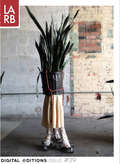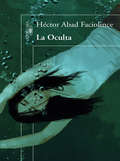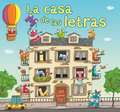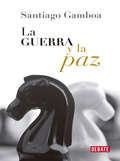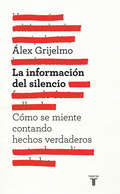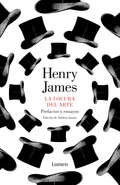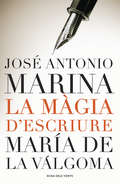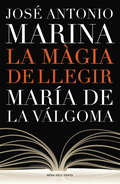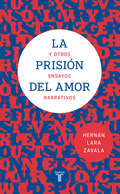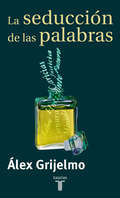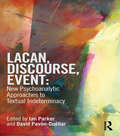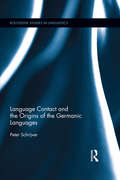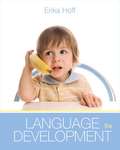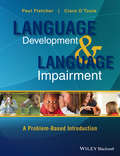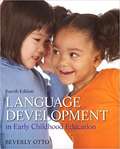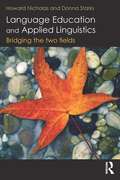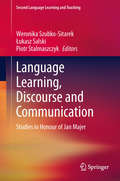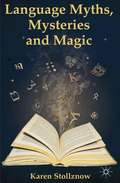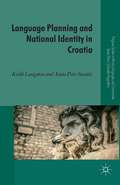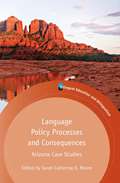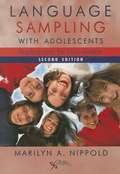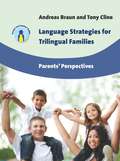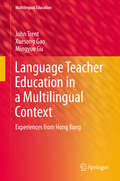- Table View
- List View
LARB Digital Edition: Memoir
by Dinah LenneyThe LARB Digital Edition Memoir epub is a selection of feature articles from the Los Angeles Review of Books's memoir and creative nonfiction section, personally curated by Creative Nonfiction editor Dinah Lenney.
La Oculta
by Abad Faciolince HéctorTres hermanos, ya envejecidos,narran los hechos de La Oculta, una finca devastada por los ventarrones de la historia colombiana. Los nombres son bíblicos y parecen antiguos: Jericó, en Antioquia. Y en una zona apartada de Jericó, una finca escondida en la montaña: La Oculta. Tres hermanos: Pilar, Eva y Antonio Ángel, son los últimos miembros de una vieja familia, y los herederos de esa propiedad. La finca, una selva abierta y colonizada por los bisabuelos, ha sido el sustento y la razón de ser de varias generaciones de Ángel. Después dehaber sobrevivido a las guerras civiles ya las crisis económicas durante casi unsiglo, la finca y la familia se enfrentana nuevas amenazas: guerrillas, narcos,paramilitares, mineros, negociantes. Las vidas, los amores, los temores, los sueños y las esperanzas de los tres hermanos están irremediablemente ligados a la suerte de La Oculta. Si la finca se pierde,arrasada por los ventarrones de la historia,una cierta manera de ser y de sentir sehabrá perdido también para siempre. English Description Three siblings, now elderly, narrate the events of The Hideaway, a country estate devastated by the gales of Colombian history. The names are biblical and old-fashioned: Jericho, in Antioch. And in a zone on the outskirts of Jericho, a country estate hidden away in the mountain: The Hideaway. Three siblings: Pilar, Eva, and Antonio Ángel, are the last members of an old family, and the heirs to this property. The estate, in an open jungle colonized by their gread-grandparents, has been the foundation and reason for living of several generations of the Ángel family. After having survived civil wars and economic crises for almost a century, the estate and family face new threats: militias, drug traffickers, paramilitaries, miners, and businessmen. The lives, loves, fears, dreams, and hopes of the siblings are irrevocably linked to the luck of The Hideaway. If the estate is lost, destroyed by the gales of history, a way of life and of feeling will have been lost forever.
La casa de las letras
by Ana Punset Lucía SerranoUn divertido y original álbum ilustrado con cuentos protagonizados por las letras del abecedario. ¡Descubre las aventuras de estos vecinos tan especiales! La casa de las letraste abre hoy sus puertas.Ven a conocerlas y verásque todas tienen su personalidad.Con tus amigas las letras,no te aburrirás jamás. En la casa de las letras vive el abecedario completo. Descubre las aventuras más divertidas de cada una de las letras. La P de parlanchina, la M de motorista..., consonantes y vocales, todas viven aquí, en el edificio más loco y divertido de toda la ciudad. ¡La manera más divertida de aprender las letras! * Y si quieres aprender los números, descubre el álbum de cuentos La casa de los números.
La guerra y la paz
by Santiago Gamboa¿Guerra o paz? A través de la pluma de Santiago Gamboa un recorridohistórico sobre este controvertido tema. Santiago Gamboa se propone, con este ensayo, hacer un aporte a lareflexión que hoy se plantea el país acerca de los temas del conflicto yla reconciliación. Y lo hace por medio de un rico e ilustrador viaje através de la historia, para mostrar las distintas caras de la guerra yel camino que otros pueblos han recorrido en la construcción de la paz,la creación más elaborada y valiosa de la civilización. La paz, afirmaGamboa, será posiblemente #el más decisivo y contundente de todos loscombates librados por la sociedad colombiana en las últimas décadas#.#A lo largo de este libro pretendo interrogar, desde una perspectivahumanista y cultural, el modo como la guerra ha ido transformando a lassociedades y lo que ha significado la paz en algunos momentos claves. Yaunque no soy un historiador ni un teórico, he querido ver los avataresde esa experiencia a través de la historia, la literatura, la filosofíae incluso las religiones; también, en algún caso concreto, desde mipropia experiencia directa de cronista y viajero curioso.#SANTIAGO GAMBOA ¿Guerra o paz? A través de la pluma de Santiago Gamboa un recorridohistórico sobre este controvertido tema. Santiago Gamboa se propone, con este ensayo, hacer un aporte a lareflexión que hoy se plantea el país acerca de los temas del conflicto yla reconciliación. Y lo hace por medio de un rico e ilustrador viaje através de la historia, para mostrar las distintas caras de la guerra yel camino que otros pueblos han recorrido en la construcción de la paz,la creación más elaborada y valiosa de la civilización. La paz, afirmaGamboa, será posiblemente #el más decisivo y contundente de todos loscombates librados por la sociedad colombiana en las últimas décadas#.#A lo largo de este libro pretendo interrogar, desde una perspectivahumanista y cultural, el modo como la guerra ha ido transformando a lassociedades y lo que ha significado la paz en algunos momentos claves. Yaunque no soy un historiador ni un teórico, he querido ver los avataresde esa experiencia a través de la historia, la literatura, la filosofíae incluso las religiones; también, en algún caso concreto, desde mipropia experiencia directa de cronista y viajero curioso.#SANTIAGO GAMBOA
La información del silencio: Cómo se miente contando hechos reales
by Álex GrijelmoUna aportación innovadora a la ética de la información: en este libro se demuestra que el silencio también habla. «Anoche fue encontrado el cadáver de Eustasio Peláez en una calle del polígono industrial C-40. Momentos antes se había visto por el lugar a Higinio Gurméndez, con el que tenía un litigio por unas tierras». Puede ocurrir que esos dos hechos sean ciertos, y que sin embargo se derive de ellos una interpretación falsa. Porque el lector entenderá algo que no se ha dicho... pero se ha querido decir. ¿Qué debe hacer un juez en un caso así? ¿Se puede condenar a un periodista por contar hechos verdaderos? Álex Grijelmo ha escrito ya siete libros sobre periodismo y sobre divulgación lingüística, pero éste es distinto de los anteriores. En La información del silencio, no se trata tanto de introducir al lector en el conocimiento del mundo de la lengua #aunque ese propósitotambién se consigue# como de construir una teoría sólida sobre las manipulaciones informativas basadas en trucos de silencio: esa forma de decir callando, de contar medias verdades. Tras un recorrido lleno de ejemplos para explicar los significados del silencio tanto en el cine como en la literatura, en la retórica, en la música..., la obra se centra en la rama de la lingüística conocida como pragmática, que estudia el sentido de lo que decimos más allá de su significado. Y edifica así un armazón teórico para aplicarlo en los últimos capítulos, referidos ya al periodismo y a sus trampas. Este libro constituye, por tanto, una aportación innovadora a la ética de la información, porque demuestra que el silencio también habla, y que el silencio puede mentir; y que los jueces no lo escuchan.
La locura del arte
by Henry JamesCuando la novela aun no había alcanzado a la poesía en la jerarquía delas artes, Henry James revolucionó la narrativa de su tiempo con creacionesmuy arriesgadas y, como consecuencia, empezó a echar de menosuna reflexión crítica paralela a su obra. Fue así como se puso a trabajaren ensayos sobre el arte de escribir novelas, tomando como referencia a losgrandes novelistas que le habían precedido, entre ellos George Eliot y GustaveFlaubert.Más adelante, a principios del siglo xx, cuando su obra completase publicó por primera vez en Nueva York, el autor se encargó personalmentede escribir unos iluminadores prefacios a sus obras.Este volumen, editado y prologado por Andreu Jaume y traducido por Oliviade Miguel, reúne una selección de textos en los que Henry James habla deHenry James. El resultado es una de las experiencias críticas y autobiográficasmás interesantes de la historia de la literatura."Trabajamos en la oscuridad...Lo hacemos lo mejor que podemos y entregamos todo lo que está en nuestras manos. La duda es nuestra pasión, y a esa pasión nos dedicamos con ahínco. El resto corre de cuenta de la locura del arte."Henry James
La màgia d'escriure
by José Antonio MarinaLa gran creació de la intel·ligència és la capacitat d'expressar, dir, comunicar-nos, escriure. És el moment de la gran síntesi, deposar en net. El que sentim confusament, allò que sabem en termes generals, el que ens passa pel cap com una sospita o un desig de premonició adquireix precisió i fermesa. Aquest també és un llibre de màgia, com ho era La màgia de llegir. Tracta de la transfiguració de la realitat. El que eren les coses, esdeveniments, passions, es transforma en paraules. Hi pot haver màgia més gran? A La màgia d'escriure ens acostem a la intel·ligència que crea mitjançant paraules i ens preguntem: com podem ensenyar a escriure a l'escola, a l'educació secundària? Com podem els adults aprendre a escriure? En aquest llibre, però, hi ha una tercera part. També hem entrat a l'habitació de treball de molts escriptors per descobrir-hi els seus secrets, els mecanismes més ocults de la creativitat. Hem fet de cronistes d'allò que és meravellós. I, després, hem intentat fer una pedagogia de la creació literària. No se'ns pot acusar de ser massa humils. José Antonio Marina i María de la Válgoma.
La màgia de llegir
by José Antonio MarinaLlegir és una necessitat urgent pública i privada. La vida humana transcorre entre paraules. La nostra intel·ligència és lingüística i la nostra convivència, íntima o política, també. Aquest llibre és una introducció poètica, científica i pràctica a la lectura. Un manual per a pares, mestres, professors de secundària i per a lectors curiosos. Però, bàsicament, és un llibre de màgia. Barreja receptes i consells per fer encanteris prodigiosos. Els que divideixen la màgia en blanca i negra s'equivoquen. Obliden que la màgia més poderosa i magnífica és la del negre sobre el blanc. L'escriptura, i la lectura, és clar, que n'és el complement, d'on surten fades i dracs, mons nous i mons antics, personatges, històries, sentiments, lleis, poemes i equacions. El llenguatge va transfigurar l'espècie humana. Tant de bo La màgia de llegir faci el mateix amb vosaltres.
La prisión del amor y otros ensayos narrativos
by Hernán Lara ZavalaLa prisión del amor y otros ensayos narrativos explora la relación entre la literatura y la vida; propone al lector un viaje por la condición humana a través de la revisión de algunas de las obras más destacadas de la literatura moderna. De Hernán Lara Zavala, ganador del Premio Real Academia Española. Un viaje por la condición humana a través del análisis y la celebración de algunas de las mayores obras de la literatura moderna. La inagotable variedad de la vida es la materia de las obras literarias. (Sin amor no habría polvo enamorado.) Pero lo contrario es igualmente cierto: la literatura alimenta nuestra vida, la modifica, la inventa. El lenguaje con el que contamos y cantamos también nos condiciona. El autor nos guía por el entramado de epifanías y erotismo de la obra Joyce, por la atribulada vida de Malcolm Lowry, por la estética del fracaso de F. Scott Fitzgerald, por las cercanas distopías Orwell y Huxley, así como por las desembocaduras literarias de Nietzsche. En el camino también aparecen Wilde, Faulkner, Hemingway, Stevenson y Proust, el divorcio entre ciencias y humanidades, la alianza entre alcohol y escritura. Los ensayos de este libro son paseos, ejercicios de asombro. Constituyen una constelación de afinidades electivas, una galería de espejos donde el autor se reconoce y nos invita a encontrar los puentes secretos entre obras, escritores, motivos, palabras y cosas.
La seducción de las palabras
by Álex GrijelmoUn recorrido por las manipulaciones del pensamiento. Según qué palabras utilicemos así formaremos nuestro pensamiento. Desde la política, la publicidad, hasta el amor y la literatura, muchos intentan dominar los mecanismos de seducción verbal para así manipular el pensamiento ajeno. <P><P> Esta obra analiza con innumerables ejemplos cómo se manipulan hoy en día los vocablos para alterar la percepción que tenemos de la realidad, cómo se emplea su fuerza o su sutileza para engatusar a los demás.
Lacan, Discourse, Event: New Psychoanalytic Approaches To Textual Indeterminacy
by Ian Parker David Pavón-CuéllarLacan, Discourse, Event: New Psychoanalytic Approaches to Textual Indeterminacy is an introduction to the emerging field of Lacanian Discourse Analysis. It includes key papers that lay the foundations for this research, and worked examples from analysts working with a range of different texts. The editors Ian Parker and David Pavón-Cuéllar begin with an introduction which reviews the key themes in discourse analysis and the problems faced by researchers in that field of work including an overview of the development of discourse analysis in different disciplines (psychology, sociology, cultural studies and political and social theory). They also set out the conceptual and methodological principles of Lacan's work insofar as it applies to the field of discourse. Ian Parker and David Pavón-Cuéllar have divided the book into three main sections. The first section comprises previously published papers, some not yet available in English, which set out the foundations for 'Lacanian Discourse Analysis'. The chapters establish the first lines of research, and illustrate how Lacanian psychoanalysis is transformed into a distinctive approach to interpreting text when it is taken out of the clinical domain. The second and third parts of the book comprise commissioned papers in which leading researchers from across the social sciences, from the English-speaking world and from continental Europe and Latin America, show how Lacanian Discourse Analysis works in practice. Lacan, Discourse, Event: New Psychoanalytic Approaches to Textual Indeterminacy is intended to be a definitive volume bringing together writing from the leaders in the field of Lacanian Discourse Analysis working in the English-speaking world and in countries where Lacanian psychoanalysis is part of mainstream clinical practice and social theory. It will be of particular interest to psychoanalysts of different traditions, to post-graduate and undergraduate researchers in psycho-social studies, cultural studies, sociology and social anthropology.
Language Contact and the Origins of the Germanic Languages (Routledge Studies in Linguistics #13)
by Peter SchrijverHistory, archaeology, and human evolutionary genetics provide us with an increasingly detailed view of the origins and development of the peoples that live in Northwestern Europe. This book aims to restore the key position of historical linguistics in this debate by treating the history of the Germanic languages as a history of its speakers. It focuses on the role that language contact has played in creating the Germanic languages, between the first millennium BC and the crucially important early medieval period. Chapters on the origins of English, German, Dutch, and the Germanic language family as a whole illustrate how the history of the sounds of these languages provide a key that unlocks the secret of their genesis: speakers of Latin, Celtic and Balto-Finnic switched to speaking Germanic and in the process introduced a 'foreign accent' that caught on and spread at the expense of types of Germanic that were not affected by foreign influence. The book is aimed at linguists, historians, archaeologists and anyone who is interested in what languages can tell us about the origins of their speakers.
Language Contact in the Early Colonial Pacific
by Emanuel J. DrechselThis volume presents a historical-sociolinguistic description and analysis of Maritime Polynesian Pidgin. It offers linguistic and sociohistorical substantiation for a regional Eastern Polynesian-based pidgin, and challenges conventional Eurocentric assumptions about early colonial contact in the eastern Pacific by arguing that Maritime Polynesian Pidgin preceded the introduction of Pidgin English by as much as a century. Emanuel J. Drechsel not only opens up new methodological avenues for historical-sociolinguistic research in Oceania by a combination of philology and ethnohistory, but also gives greater recognition to Pacific Islanders in early contact between cultures. Students and researchers working on language contact, language typology, historical linguistics and sociolinguistics will want to read this book. It redefines our understanding of how Europeans and Americans interacted with Pacific Islanders in eastern Polynesia during early encounters and offers an alternative model of language contact.
Language Development
by Erika HoffErika Hoff's LANGUAGE DEVELOPMENT, 5th Edition communicates both the content and the excitement of this quickly evolving field. By presenting a balanced treatment that examines all sides of the issues, Hoff helps readers understand different theoretical points of view-- and the research processes that have lead theorists to their findings. After an overview and history of the field, Hoff thoroughly covers the biological bases of language development and the core topics of phonological, lexical, and syntactic development. She also provides in-depth discussions of the communicative foundations of language, the development of communicative competence, language development in special populations, childhood bilingualism, and language development in the school years.
Language Development and Language Impairment
by Ciara O'Toole Paul FletcherLanguage Development and Language Impairment offers a problem-based introduction to the assessment and treatment of a wide variety of childhood language developmental disorders. Focuses for the most part on the pre-school years, the period during which the foundations for language development are laid Uses a problem-based approach, designed to motivate students to find the information they need to identify and explore learning issues that a particular speech or language issue raises Examines the development of a child's phonological system, the growth of vocabulary, the development of grammar, and issues related to conversational and narrative competence Integrates information on typical and atypical language development
Language Development in Early Childhood Education
by Beverly W. OttoWritten by Beverly Otto, Language Development in Early Childhood Education, 4/e efficiently combines theory, research, and practice to provide a solid foundation for understanding language development in children birth through age eight. A comprehensive resource, it focuses on the development of phonological, semantic, syntactic, morphemic, and pragmatic language skills, children's understanding of written language, and ways in which this acquisition process can be enhanced in early childhood settings. Exact guidance on how to develop classrooms and other learning environments that enhance children's language development is also provided. Every chapter begins with interesting vignettes of young children's language development, and throughout all the chapters, readers will discover anecdotal narratives to illustrate key concepts and interaction strategies.
Language Education and Applied Linguistics: Bridging the two fields
by Howard Nicholas Donna StarksLanguage Education and Applied Linguistics: bridging the two fields provides a starting point for students and researchers in both Language and Education who wish to interpret and use insights from the field of Applied Linguistics, and for Applied Linguists who wish to engage in dialogue with language educators and researchers in education. Providing a framework for understanding the resources individuals use to communicate, this accessible and innovative text will enable teachers and learners to understand and discuss features and tools used in communication. This framework enables: Learners to explore their current language abilities and their desired future communicative abilities, empowering them to engage with their own language learning needs Language educators to explore central concerns in multiliteracy, digital literacies, plurilingualism and plurilingual development Applied Linguistics students to understand theories of applied linguistics and language education Sociolinguists to bring their research into education Language Education and Applied Linguistics can be used by students, teachers, researchers and teacher educators to explore multilingual contexts and communicative purposes in language classrooms, language education and applied linguistics.
Language Learning, Discourse and Communication
by Weronika Szubko-Sitarek Łukasz Salski Piotr StalmaszczykThis volume brings together papers on a wide spectrum of topics within the broad area of language acquisition, stressing the interconnections between applied and theoretical linguistics, as well as language research methodology. These contributions in honor of Professor Jan Majer have been grouped in two sections: language learning, and discourse and communication. The former discusses issues varying from aspects of first, second, and third language acquisition, individual learner differences (i. e. gender, attitudes, learning strategies), and second language research methodology to the analysis of features of learner spoken language, the role of feedback in foreign language instruction, and the position of culture in EFL textbooks. The second part of the volume offers a theoretical counterbalance to the applied nature of the first one. Here, the contributions touch upon spoken and written language analysis, language awareness, and aspects of the English language; also, selected issues of language philosophy are discussed. The wide range of topics covered in the publication, authored by specialists in their respective areas, reflects Professor Majer's academic interests and corresponds to the complex nature of the general field the volume aims to portray.
Language Myths, Mysteries and Magic
by Karen StollznowCan a bump on the head cause someone to speak with a different accent? Can animals, aliens, and objects talk? Can we communicate with gods, demons, and the dead? Language Myths, Mysteries and Magic is a curio shop full of colourful superstitions, folklore, and legends about language.
Language Planning and National Identity in Croatia
by Keith Langston Anita Peti-StantićFollowing the collapse of the former Yugoslavia, Croatian was declared to be a separate language, distinct from Serbian, and linguistic issues became highly politicized. This book examines the changing status and norms of the Croatian language and its relationship to Croatian national identity, focusing on the period after Croatian independence.
Language Planning and National Identity in Croatia (Palgrave Studies in Minority Languages and Communities)
by K. Langston A. Peti-StanticFollowing the collapse of the former Yugoslavia, Croatian was declared to be a separate language, distinct from Serbian, and linguistic issues became highly politicized. This book examines the changing status and norms of the Croatian language and its relationship to Croatian national identity, focusing on the period after Croatian independence.
Language Policy Processes and Consequences
by Sarah Catherine K. MooreThis book accessibly and comprehensively outlines the highly complex case of the English-only movement and educational language policy in Arizona. It ranges from early Proposition 203 implementation to an investigation of what Structured English Immersion (SEI) policy looks like in today's classrooms, and concludes with a discussion on what the various cases mean for the education of English learners in the state.
Language Sampling with Adolescents: Implications for Intervention (Second Edition)
by Marilyn A. Nippold<p>Language Sampling with Adolescents: Implications for Intervention, now in its second edition, provides guidelines for analyzing spoken and written language production in adolescents. It is geared toward graduate students and speech-language pathologists who work in the public schools with middle school and high school students (Grades 5-12). The book includes many tables, figures, and practical exercises (with answer keys) to help readers understand how to analyze the content and structure of what adolescents express in different genres: conversational, narrative, expository, and persuasive. Based on formal analyses, the book indicates how the information can be applied to establish functional language goals for adolescents with language disorders. It also explains how to implement intervention activities that are designed to enhance spoken and written language production in adolescents. <p>For the second edition, the author has revised and updated the content and added a new chapter on "Adolescent Language Disorders" that includes information on specific language impairment, nonspecific language impairment, and autism spectrum disorder. </p>
Language Strategies for Trilingual Families
by Andreas Braun Tony ClineThis book aims to enable parents in trilingual families to consider possible language strategies on the basis of analysing their individual circumstances. It includes a tool for diagnostic self-analysis that will help each reader to identify their situation and learn how parents in similar situations have approached the task of supporting their children's use of languages. Based on a unique survey of parents in trilingual families in two European countries, the book highlights the challenges that trilingual families face when living in mainly monolingual societies. It takes into account the recent emergence of a 'New Trilingualism' among educated parents who find themselves in trilingual families because of global trends in migration and the recent expansion of the EU.
Language Teacher Education in a Multilingual Context
by John Trent Xuesong Gao Mingyue GuThis book provides a multifaceted, multilayered examination of the processes and challenges language teachers face in constructing their professional identities in multilingual contexts such as Hong Kong. It focuses on how professional and personal identities are enacted as individuals cross geographic, educational, and socio-cultural boundaries to become English language teachers in Hong Kong. It explores the construction of language teachers' professional identities from multiple perspectives in multiple settings, including pre-service and in-service teachers from Hong Kong, Mainland China, and Western countries. Understanding the difficulties and challenges these language teachers face in their identity and professional development is of relevance to teachers and teacher educators, as well as those interested in becoming language teachers in multilingual contexts.
